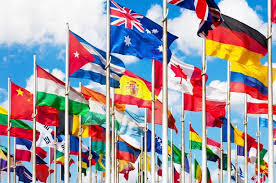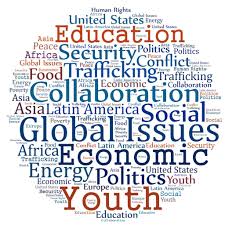Inclusive Conservation: Empowering Indigenous Communities for Global Sustainability
Introduction:
In today's rapidly changing world, the preservation of global resources and the conservation of the environment have become more crucial than ever before. It is essential to recognize that sustainable development requires the active participation and empowerment of all stakeholders, including indigenous communities. By embracing inclusive conservation practices, we can promote global sustainable resources utilization and environment conservation more effectively.
The Importance of Inclusive Conservation:
Inclusive conservation encompasses the involvement of indigenous communities in decision-making processes related to the sustainable management of natural resources. This approach acknowledges the invaluable traditional knowledge and practices of indigenous peoples, which have been honed over generations and can significantly contribute to global sustainability efforts. Embracing inclusivity promotes social, economic, and environmental benefits for both indigenous communities and the wider global population.
Protecting Cultural Diversity:
Indigenous communities around the world possess a wealth of cultural heritage that is deeply intertwined with their natural surroundings. By empowering these communities, we can safeguard their cultural diversity and prevent the erosion of traditional knowledge systems, languages, and practices. This, in turn, fosters a sense of global unity by celebrating the richness and diversity of human cultures.
Promoting Sustainable Resource Utilization:
Indigenous communities often possess intricate knowledge of their local ecosystems and have developed sustainable resource management practices. By integrating their traditional practices with modern conservation strategies, we can enhance the sustainable utilization of resources. For example, indigenous communities in the Amazon rainforest have successfully implemented agroforestry systems, preserving biodiversity while ensuring food security and income generation.
Strengthening Environmental Conservation Efforts:
Inclusive conservation encourages indigenous communities to actively participate in environmental conservation initiatives. When communities are empowered with the necessary resources and knowledge, they become stewards of their natural habitats, implementing practices that promote biodiversity preservation and climate change mitigation. This collaboration leads to more effective conservation outcomes.
Enhancing Local Livelihoods:
Empowering indigenous communities through inclusive conservation not only benefits the environment but also improves local livelihoods. By supporting sustainable economic activities such as eco-tourism or traditional craftsmanship, these communities can generate income while protecting their natural resources. This holistic approach promotes economic development while ensuring the long-term sustainability of ecosystems.
Learning from Indigenous Wisdom:
Indigenous communities possess a deep understanding of their ecosystems, often passed down through generations. By engaging with them, we have the opportunity to learn valuable lessons about sustainable living, resource management, and resilience in the face of environmental challenges. Incorporating this traditional wisdom into our global sustainability efforts can lead to more effective and equitable solutions.
Recognizing Land Rights and Indigenous Governance:
Inclusive conservation acknowledges the land rights and governance systems of indigenous communities, ensuring their active involvement in decision-making processes. By respecting their rights and empowering them as custodians of their territories, we can foster a sense of ownership and responsibility towards the environment. This approach also helps safeguard against environmental exploitation and strengthens the legal protection of indigenous lands.
Collaborating for Effective Solutions:
Inclusive conservation encourages collaboration between indigenous communities, governments, NGOs, and other stakeholders. By fostering partnerships based on mutual respect and shared goals, we can pool resources and expertise to address global sustainability challenges effectively. This collective effort promotes unity and amplifies the impact of conservation initiatives.
Supporting Indigenous Education and Capacity Building:
To empower indigenous communities fully, it is essential to invest in education and capacity building programs. By providing access to quality education, training, and technical assistance, we can equip indigenous individuals with the skills and knowledge needed to actively participate in sustainable resource management and environmental conservation. Supporting indigenous-led initiatives and promoting knowledge exchange are vital elements of inclusive conservation.
Case Study: Maasai Wilderness Conservation Trust, Kenya:
The Maasai Wilderness Conservation Trust (MWCT) is a remarkable example of inclusive conservation in action. By partnering with the Maasai community in Kenya, MWCT has implemented sustainable land management practices, protected critical wildlife habitats, and supported local livelihoods through initiatives such as eco-tourism and community-led enterprises. This successful collaboration demonstrates the positive outcomes that can result from empowering indigenous communities.
Individual Actions for Global Impact:
As individuals, we can contribute to inclusive conservation efforts by supporting fair trade products sourced from indigenous communities, promoting responsible tourism, and advocating for the recognition of indigenous rights. By making conscious choices in our daily lives, we can collectively create a global movement for sustainability and environmental conservation.
Conclusion:
Inclusive conservation is a powerful tool for promoting global sustainable resources utilization and environment conservation. By empowering indigenous communities and recognizing their invaluable knowledge and practices, we can achieve more equitable, effective, and lasting solutions to the environmental challenges we face. Let us embrace inclusivity, celebrate cultural diversity, and work together towards a sustainable future.
Follow-up Questions:
- How can you support indigenous-led initiatives in your community?
- What steps can governments take to ensure the inclusion of indigenous communities in environmental decision-making processes?
- How can we encourage greater collaboration between different stakeholders in conservation efforts?
Share this article to inspire others to join the movement for inclusive conservation and promote global sustainability. Together, we can make a difference! #InclusiveConservation #GlobalSustainability #EmpoweringIndigenousCommunities #EnvironmentConservation.










No comments yet. Be the first to share your thoughts!